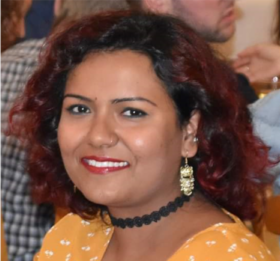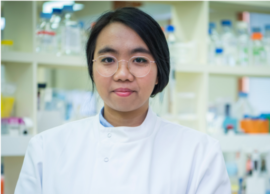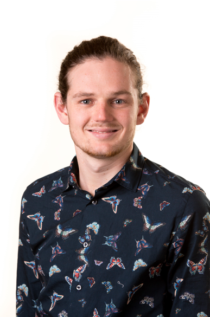Microbiology Society journal prizes: the Asian Conference on Transcription and the International Calcivirus Conference
Posted on March 23, 2020 by Microbiology Society
Each year, the Microbiology Society’s journals sponsor a number of prizes at various conferences around the world. Here, we speak with some of the winners of prizes presented at the Asian Conference on Transcription and the International Calcivirus Conference.
Winner of the Journal of Medical Microbiology’s quick-fire presentation prize at the Asian Conference on Transcription: Sulgna Banerjee

Title of talk: “Using Xenopus laevis tadpoles as a model for testing anti-inflammatory drugs as treatment for intractable epilepsy”.
What inspired you to become a scientist? Two women have been my inspirations. One is Marie Curie, an exceptionally strong-willed woman, who set such a positive example for women in science. The other woman is my mother, whose tenacity and absolute belief in her children’s capabilities inspired me pursue my passion for science.
What are you currently working on and what area of your research excites you the most? I am currently working on an epilepsy model to test alternative therapy targets for drug resistant patients, such as those with neuroinflammation. Working with the brain excites me the most about my research. There is so much we know, and yet so much to learn. It is like solving a puzzle, piece by piece.
What would you be doing in your career if you weren’t a scientist? I would probably be working full time with a Non-Governmental Organisation (NGO) to help rescue and rehabilitate children who have suffered from abuse and trauma. It is idealistic, but my life goal is to help as many people as I can. So I would try to fulfil that goal through social work.
Runner-up of the Journal of Medical Microbiology’s quick-fire presentation prize at the Asian Conference on Transcription: Sreemol Gokuladhas

Title of talk: “Shared regulatory pathways reveal novel genetic correlations between grip strength and neuromuscular disorders”.
What inspired you to become a scientist? Since my childhood, I was very curious about understanding the world around us. Perhaps that was why I was particularly drawn to scientific subjects. Following my interest with dedication is my greatest driving force.
What are you currently working on and what area of your research excites you the most? I am currently investigating the genetic risks of developing multimorbid disease conditions, following my preliminary discovery-based study on the gene regulatory mechanisms associated with neuro-muscular diseases that lead to muscle degeneration.
What would you be doing in your career if you weren’t a scientist? I would probably be an artist because I love painting.
Winner of the Journal of General Virology oral presentation prize at the International Calcivirus Conference: Egi Kardia

Title of talk:
“Towards an organoid culture system for lagoviruses”. My work involves creating models of rabbit intestines called organoids. These organoids are 3D formations of rabbit cells that are about 1mm in size, each containing hundreds/thousands of cells that mimic those in the intestine. We will use these organoids as a tool to study rabbit viruses that affect the intestines.
What inspired you to be a scientist? I studied biology and was fascinated by both macro and micro-organisms, and how much there was to learn about them. Working in science allows my creativity to roam free in the realm of research, which leads me to great discoveries.
What are you currently working on and what area of your research excites you the most? I am currently working on developing rabbit organoid culture systems to study rabbit haemorrhagic disease virus (RHDV) and other rabbit caliciviruses. Working with tissue cultures and microscopy imaging really excites me, because I get to learn and discover new techniques to create this culture model system.
What would you be doing in your career if you weren’t a scientist? I would probably do something art-related – like microphotography – as I am always amazed by how fascinating biology can be under the microscope. The first time I looked into a microscope, I was in awe of the world that was hidden from my naked eye.
Winner of the Journal of General Virology oral presentation prize at the International Calcivirus Conference: Joshua Deerain

Title of talk: “Programmed cell death during norovirus infection”. The individual cells that make up our body have ways to know if something is wrong. This could be because they are damaged, sick or infected. When this happens, our cells know they need to ‘die’ to protect other cells. However, viruses are smart and have found ways to stop this reaction or use it to spread. I am trying to understand what noroviruses do when a cell dies.
What inspired you to be a scientist? It was my grandfather that inspired me to be a scientist. He is a biologist and teacher with an immense passion for all aspects of biology. When I was growing up, he would always point out amazing examples of evolution and adaptation. He taught me to be curious, enthusiastic and ask questions.
What are you currently working on and what area of your research excites you the most? I am currently undertaking a PhD looking to understand norovirus replication and pathogenesis. Specifically, I am interested in how viruses interact with, and manipulate host-cell pathways to replicate. I am most excited at the opportunity to develop new molecular tools to explore these host-pathogen interactions.
What would you be doing in your career if you weren’t a scientist? Anything that allowed me to spend time in the bush; probably a park ranger.

